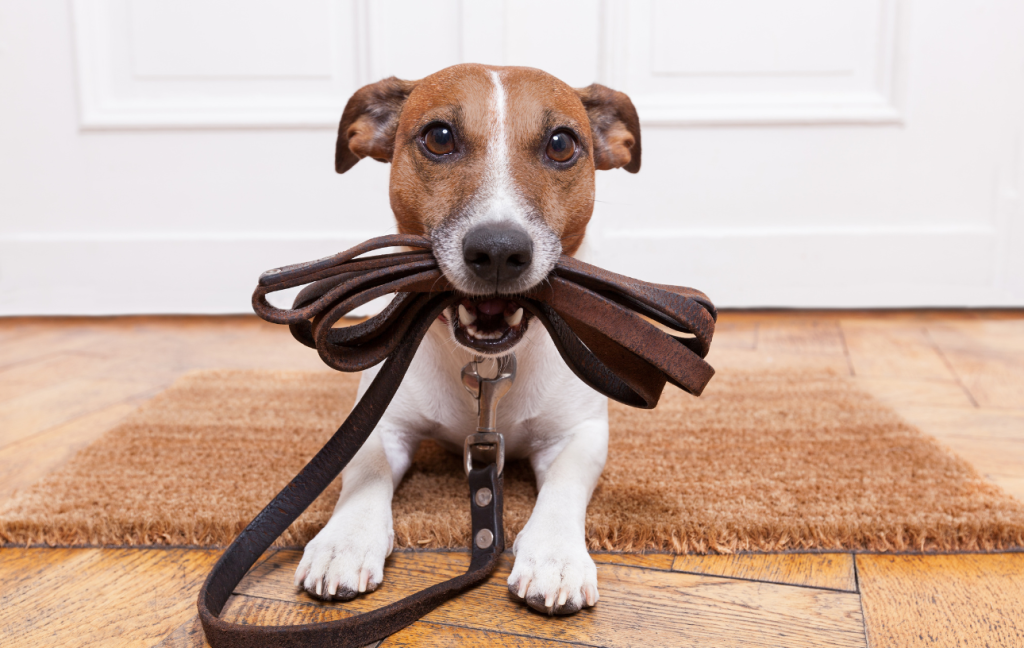These days, the term “Petiquette” is no longer unfamiliar. This shows that many people are contributing to a more mature pet culture.
So today, although many of you may already be familiar with it, High Four would like to go over pet owners’ etiquette — known as “Petiquette”- once again.
“Petiquette” is a compound word combining “pet” (referring to animals) and “etiquette” (referring to manners).
It refers to the public manners that should be observed when raising pets nowadays.
The petiquette that pet owners must follow includes the following:
1. Always Use a Leash When Going Outside
Although there is no federal law requiring leashes, most states do mandate leashing pets.
Some people still walk their dogs without a leash, saying,
“My dog doesn’t run off, bark, or bite others.”
However, this kind of complacency can lead to various safety accidents.
For the safety of the public and your dog, using a leash is absolutely essential.
2. Register Your Dog
Some states require dogs to be registered with the government.
Registering your pet makes it much easier to find them if they go missing.
If you haven’t registered your dog yet, you must take them to a nearby animal hospital and complete the registration.
At this time, rather than using an external chip, High Four highly recommend an implanted microchip inside the body.
3. Keep a Safe Distance from Others
When entering confined spaces like elevators, it’s best to hold your dog or train them to stay in a corner.
For dogs with even slight aggression or high anxiety toward people, using the stairs instead of the elevator is highly effective in preventing unexpected incidents.
4. Use a Muzzle
Some states require muzzles for dogs deemed dangerous or potentially dangerous, especially when off the owner’s property. This is often part of broader regulations aimed at preventing dog bites and protecting the public.
Even if your dog is not a designated dangerous breed, if they show signs of aggression toward people, it’s best to have them wear a muzzle when going outside to prevent possible accidents. Additionally, wearing a muzzle can help prevent unwanted approaches from strangers and stop your dog from picking up random things during walks.
It’s recommended to use a breathable basket-style muzzle that allows for easy airflow and comfort.
5. Bring a “Manner Pad”
When visiting places with many dogs, such as dog parks or animal hospitals, it’s a good idea to bring a manner pad.
It helps prevent territorial marking in various places and reduces the risk of conflicts that could lead to attacks from other dogs.
Fights can unexpectedly break out at dog daycares or dog parks when dogs sniff each other and tensions rise, so it’s best to be prepared.
6. Clean Up After Your Dog
Many people already consider this a given.
Failing to clean up your dog’s waste on grass or sidewalks not only violates public etiquette, but also leads to unsanitary conditions, attracting insects and more.
It’s best to always carry disposable gloves, plastic bags, and water when going outside with your dog.Properly handling your pet’s waste during walks is one of the most basic aspects of petiquette. Seeing dog waste left on the street is unpleasant — not only for non-pet owners but even for responsible pet owners. Be sure to clean up immediately after your dog and thoroughly remove any traces they may leave behind.
7. Use a Carrier When Taking Public Transportation
When using public transportation such as buses or subways, small dogs must be placed in a carrier. This is not only a matter of public etiquette but also a way to protect your dog from unexpected situations. Think of it as a safety measure for both your pet and the people around you.
Pettiquette for people without the pet
Petiquette is not only for people who raise pets.
Even those who do not own pets have petiquette to follow when interacting with animals.
1. Avoid Making Direct Eye Contact with Someone Else’s Dog
Staring directly into a dog’s eyes can make them feel tense or threatened.
Dogs with strong temperaments may interpret it as a challenge and prepare to attack.
2. You should never touch someone else’s dog without permission.
Dogs can become nervous, frightened, or even aggressive.
If you really want to pet the dog, be sure to ask the owner first and approach carefully.
3. Do not feed a dog without the owner’s permission.
You must always get the owner’s consent before giving any food.
The food in your hand may be hard for dogs to digest, could trigger allergies, and might distract the dog, disrupting the enjoyable walk with its owner.
4. Do not suddenly shout or scream.
A dog that doesn’t understand the situation may become startled, scared, or overly excited by sudden loud noises.
Once excited, no one can predict how the dog might react.
CONCLUSION
Petiquette isn’t just something for dog owners to follow — it also applies to people who don’t own dogs when they encounter them.
In fact, if mutual understanding and consideration for others were a natural part of our daily lives, we probably wouldn’t even need the term “petiquette.”



